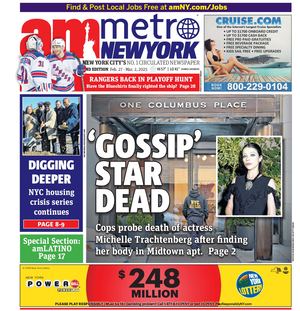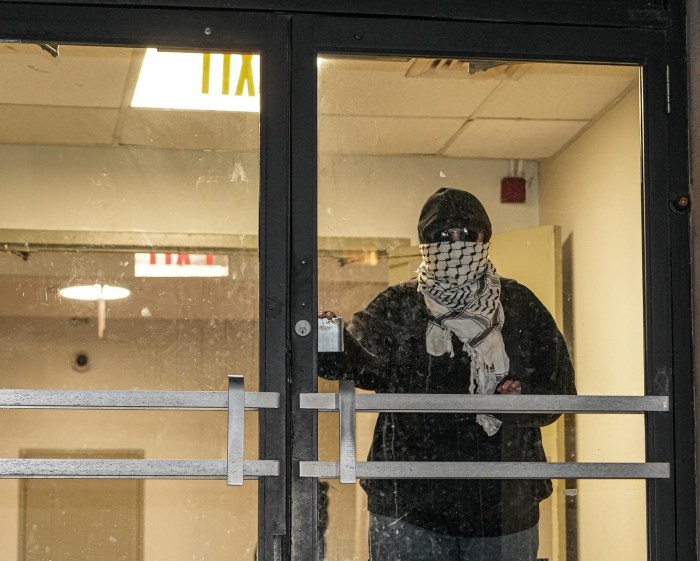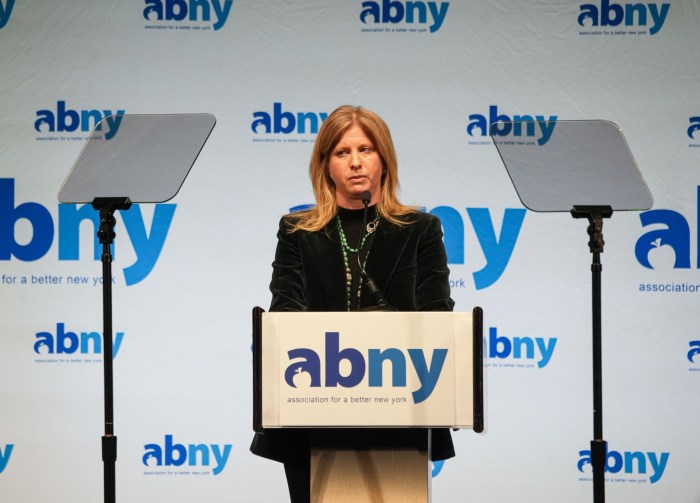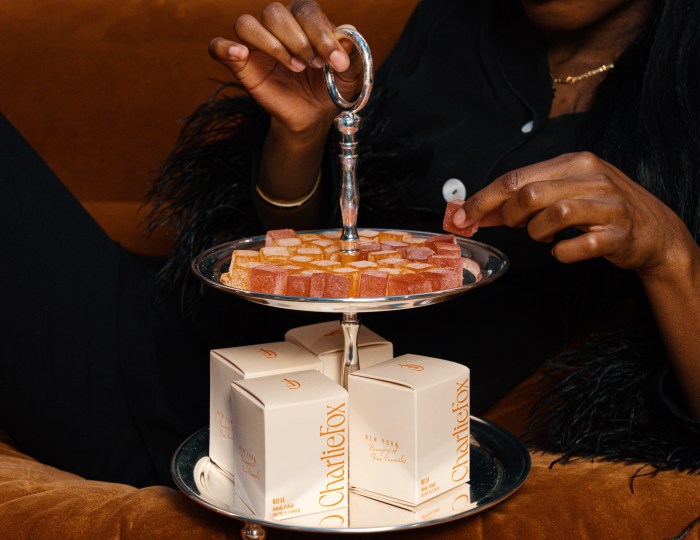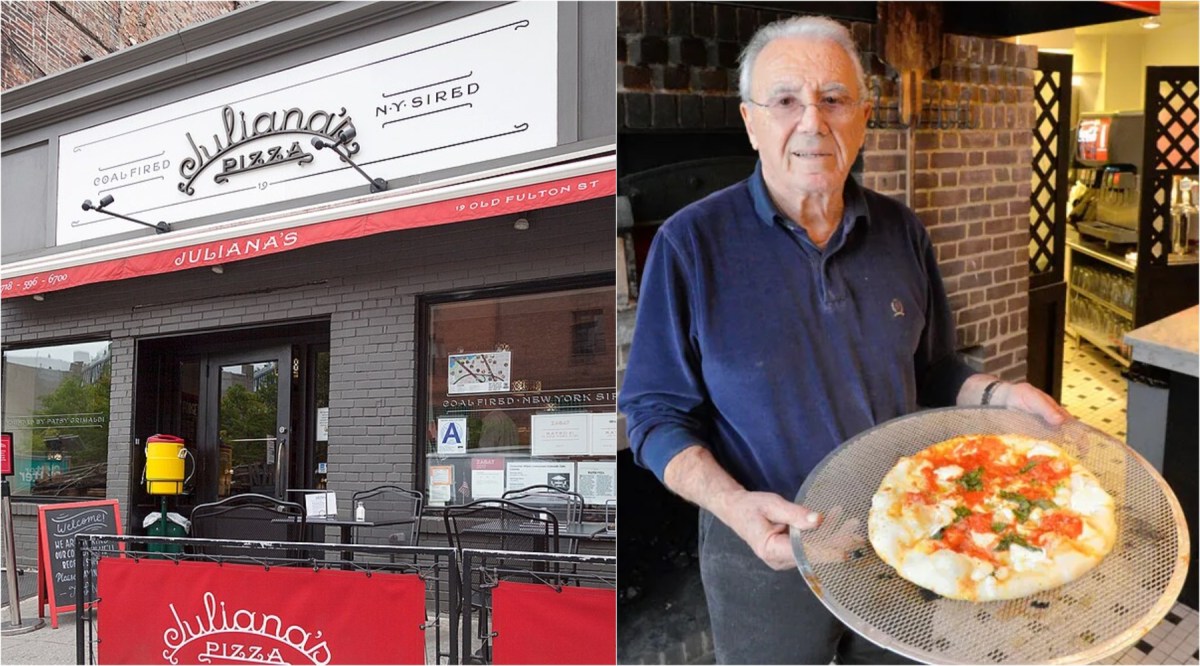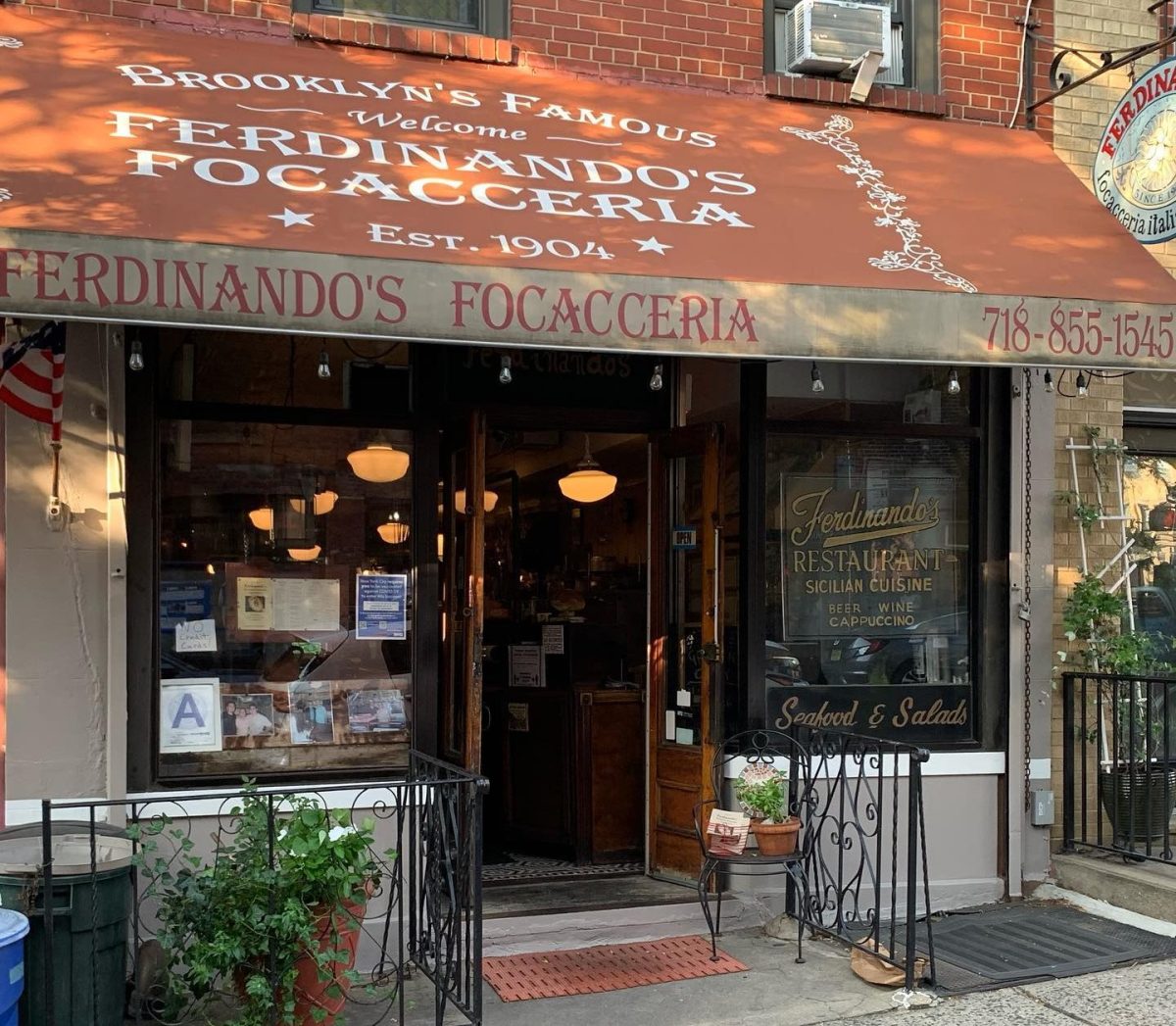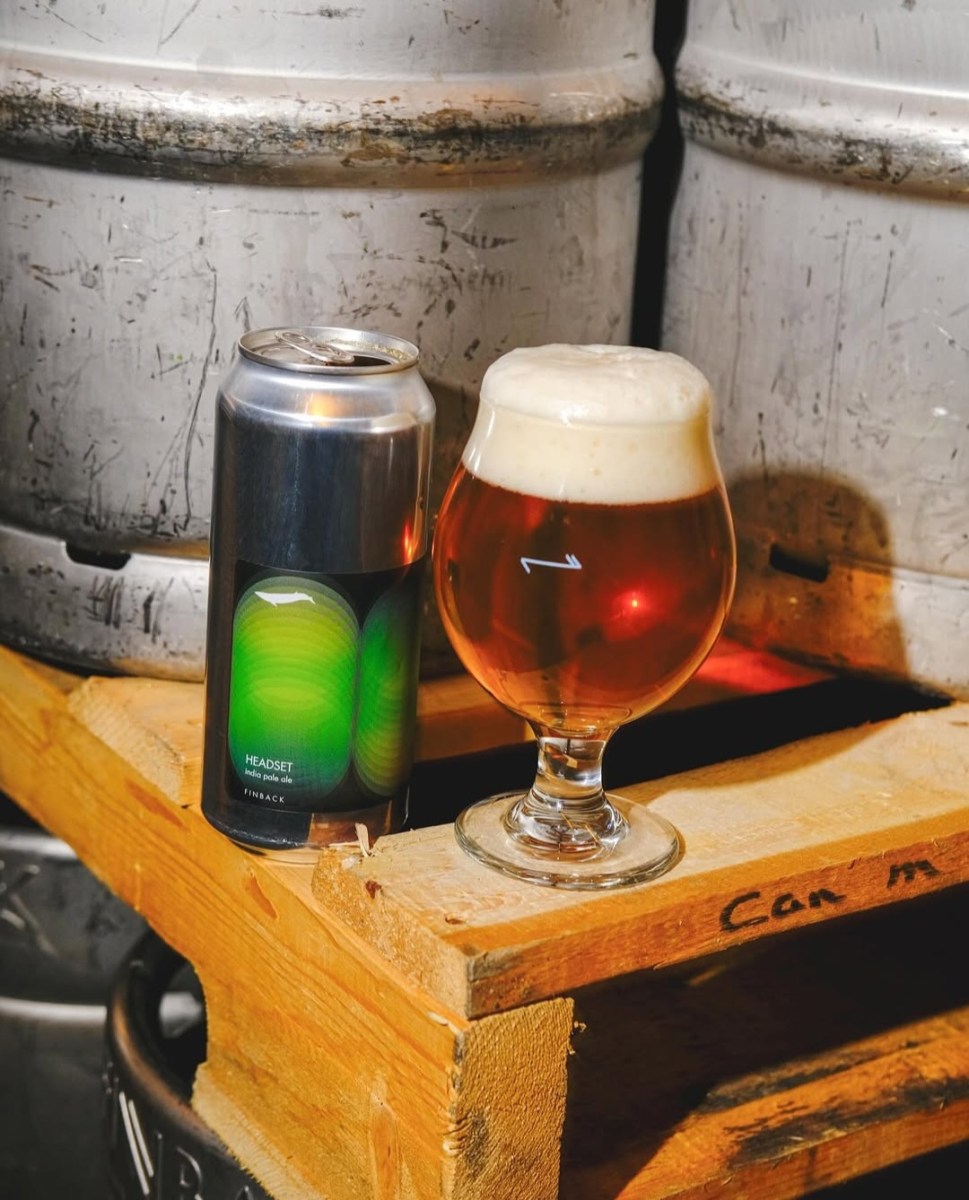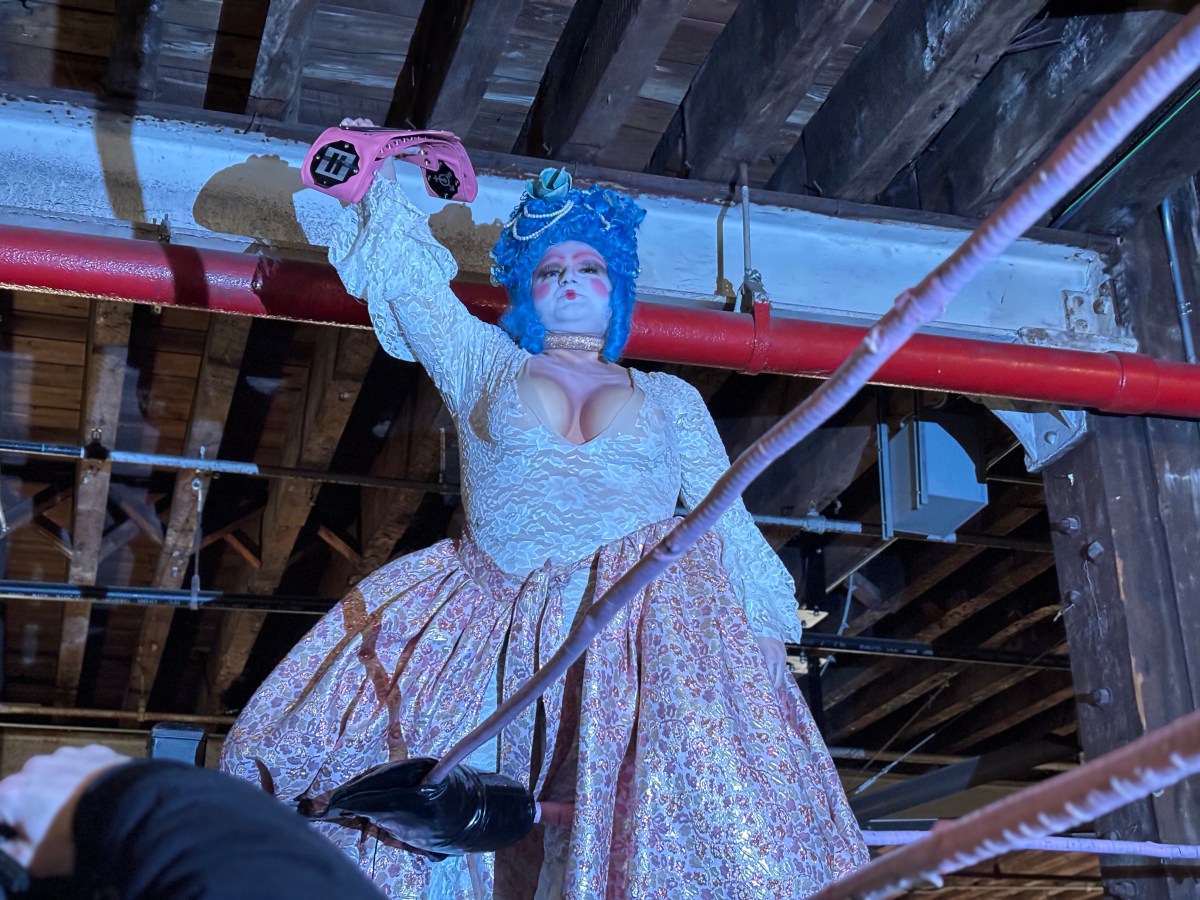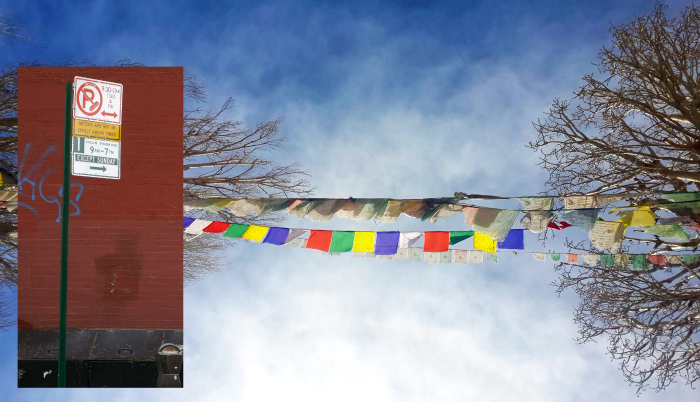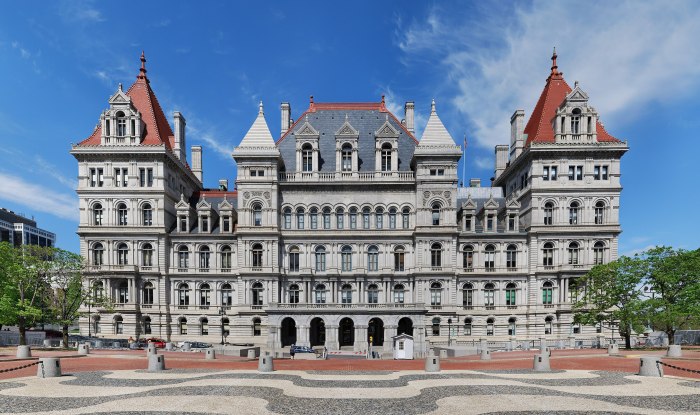-
 Florian
Florian225 Park Ave. S.
Created to mimic the world’s oldest cafe, Caffe Florian in Venice, this Italian restaurant is best-known for its classics: meatballs and spaghetti, homemade mozzarella and paper-thin pizza.
Hu Kitchen
78 Fifth Ave.
This trendy casual eatery boasts Paleo-friendly comfort food dishes, like mashed root vegetables and wild fish sticks. It also has a full coffee and juice bar, free Wi-Fi and plenty of seating.
ABC Kitchen
35 E. 18th St.
The food and ambiance are top-notch at this farm-to-table eatery.
” data-id=”112015787″ data-link=”https://amnewyork.wpengine.com/wp-content/uploads/2019/10/14520_image.jpg” class=”wp-image-1.12015787″/>Photo Credit: Linda Rosier -
 Dear Irving
Dear Irving55 Irving Place
A speakeasy-style bar with cleverly named cocktails. Make a reservation to drink in its large, Victorian-designed rooms.
Nemo
54 E. 13th St.
You don’t have to travel to K-Town for chicken wings, shots and karaoke. This no-frills venue has a large selection of songs.
Singl Lounge
80 E. 13th St.
Whether your poison is single-malt scotch or the reasonably-priced in-house wines, this cocktail bar has you covered.
” data-id=”112015829″ data-link=”https://amnewyork.wpengine.com/wp-content/uploads/2019/10/14523_image.jpg” class=”wp-image-1.12015829″/>Photo Credit: Linda Rosier -
 The Strand
The Strand828 Broadway
The 89-year-old landmarked bookstore claims to have 18 miles of books and offers readings with celebrity authors.
Forbidden Planet
832 Broadway
From hard-to-find comic books to limited-edition action figures, this science fiction and fantasy shop is the best place in town for nerds to indulge.
Bedford Cheese Shop
67 Irving Plaza
Drop in to sample seasonal cheeses and to sign up for evening classes, like Mozzarella Making and Knife Skills 101.
” data-id=”112015825″ data-link=”https://amnewyork.wpengine.com/wp-content/uploads/2019/10/14527_image.jpg” class=”wp-image-1.12015825″/>Photo Credit: Linda Rosier -
 Vineyard Theatre
Vineyard Theatre108 E. 15th St.
The award-winning off-Broadway nonprofit theater company features local playwrights and actors — many of whom just happen to also be famous.
Union Square Greenmarket
East 17th Street and Union Square West
Grab some cheese and bread from Ronnybrook Farms and Hot Bread Kitchen for a picnic at the park, or buy your weekly groceries from the roughly 140 vendors.
Irving Plaza
17 Irving Place
Both up-and-coming bands and iconic acts like Paul McCartney have played shows at this ballroom-style music venue.
” data-id=”112015767″ data-link=”https://amnewyork.wpengine.com/wp-content/uploads/2019/10/14529_image.jpg” class=”wp-image-1.12015767″/>Photo Credit: Linda Rosier -
 Trains:
Trains:4, 5, 6, L, N, Q, R to Union Square
Buses:
M1, M2, M3, M5, M14A, M14D
” data-id=”112015872″ data-link=”https://amnewyork.wpengine.com/wp-content/uploads/2019/10/14533_image.jpg” class=”wp-image-1.12015872″/>Photo Credit: Linda Rosier -
 Median sales price: $1,250,000
Median sales price: $1,250,000
Number of units on market: 129
Median rental price: $3,993
Number of rentals on market: 534
(Source: StreetEasy)
” data-id=”112015910″ data-link=”https://amnewyork.wpengine.com/wp-content/uploads/2019/10/192_image.png” class=”wp-image-1.12015910″/>
Photo Credit: Linda Rosier -
 In February, BuzzFeed moved to 18th Street and Park Avenue South, bringing about 600 employees — skewed on the younger side — to the neighborhood haunts.
In February, BuzzFeed moved to 18th Street and Park Avenue South, bringing about 600 employees — skewed on the younger side — to the neighborhood haunts.Local businesses were excited to have the talked-about company around.
Ainsworth Park, a sports bar at 111 E. 18th St., for example, introduced a pizza burger called the BuzzFeed Burger to welcome its new neighbor. BuzzFeed conducted an online poll to vote on what the burger should be.
Employees from the Italian restaurant Florian, which is located in the same building as BuzzFeed, visited the media company’s office with a sampling of its menu.
“We’re getting so many BuzzFeed employees coming in,” said Jeff Baskin, 55, the maître d’ of Florian. “The clientele is a much younger crowd than what I’m used to from working uptown.”
The website’s employees said they are enjoying their lunch-hour options.
“I personally really enjoy walking over to Irving Coffee for my weekday pick-me-up,” said Stephanie Kennard, 29, associate manager of communications at BuzzFeed.
” data-id=”112015778″ data-link=”https://amnewyork.wpengine.com/wp-content/uploads/2019/10/14536_image.jpg” class=”wp-image-1.12015778″/>Photo Credit: Linda Rosier
Union Square is not just a popular destination for tourists, it’s also home to theater enthusiasts, a vibrant restaurant scene and a booming real estate market.
“It’s truly a 24/7 residential and commercial district,” said Jennifer Falk, executive director of Union Square Partnership, a non-profit community organization. “Many people live and work in the district, then also spend their leisure time here.”
With the Union Square Park subway stations the fourth-busiest in the city on weekdays and second-busiest on weekends, according to the MTA, the area businesses are constantly bustling.
“Being a restaurant in Union Square means that you serve both residents who treat us like their downstairs kitchen and one-time visitors who want a taste of New York,” said Sam Lipp, 35.
Lipp is the managing partner at Danny Meyer’s first restaurant, Union Square Cafe, which was at 16th Street and Broadway for five years before it closed to relocate to 19th and Park this fall.
Residents can easily walk to Chelsea or the East Village for trendy dining, but they can also stay close to home at popular restaurants like ABC Kitchen at 35 E. 18th St., Tocqueville at 1 E. 15th St., or Friend of a Farmer at 77 Irving Place.
“What makes Union Square so unique, but also so special, is that four different neighborhoods — Gramercy, Flatiron, Greenwich Village and the East Village — all converge upon the area,” explained Kelly Waters, 37, a real estate sales broker with Compass who specializes in the area.
Due to its access to the park and several train and bus lines, the competition for real estate in the area is fierce, she said.
According to the listings site StreetEasy, the median sales price in Union Square was $1,250,000 in 2015, compared to $990,000 in Manhattan as a whole.
The median rent in the area last year was $3,993, compared to $3,200 in the entire borough, the site found.
Housing ranges from luxury condos like at 37 E. 12th St. and 15 Union Square W., where prices go as high as $20 million, and rental buildings like 145 and 85 Fourth Ave., where one-bedrooms rent for around $4,800 a month. At the 27-story One Union Square South, one-bedrooms rent for $5,630 a month.
For those on a tighter budget, there are walkups, like the four-story 861 Broadway, where a three-bedroom rented for $6,600 in June, according to StreetEasy.
Union Square Park offers numerous perks, such as outdoor fitness classes, lunchtime jazz concerts and movie nights in the summer.
The park’s Greenmarket, which opened in 1967, features around 140 vendors from farms around the Northeast, along with composting and other recycling services.
Bill Carter, a 54-year-old personal trainer and chef, heads to the market several times a week to buy huckleberries from Berried Treasures and meat from Violet Hill Farms.
“It was so much smaller in the ’80s,” Carter, who now resides in Astoria, said of the Greenmarket.
“I shopped here when it was still ‘Needle Park,’ when no one wanted to linger,” he added, referring to a nickname given to city parks that were known for drug use and crime. “Now, people stay to chat all day!”
The performing arts is also vibrant in the neighborhood at theaters like Vineyard Theatre on 15th and Irving Place and the Daryl Roth Theatre on 15th and Union Square East. Street performances are also held regularly at the south end of Union Square Park.
“I saw John Slattery there and had a spazzed-out ‘Mad Men’ moment,” two-year resident and artist Jessica Redmond, 25, said. “Also, I get out of the 6 train downtown subway at the park, and the stairs lead right up to an area where there are often performers … You never quite know what will be at the top of the stairs that day.”
Find it:
The Union Square area runs from 12th Street in the south to 18th Street in the north, Fifth Avenue in the west to Irving Place and Fourth Avenue in the east.
